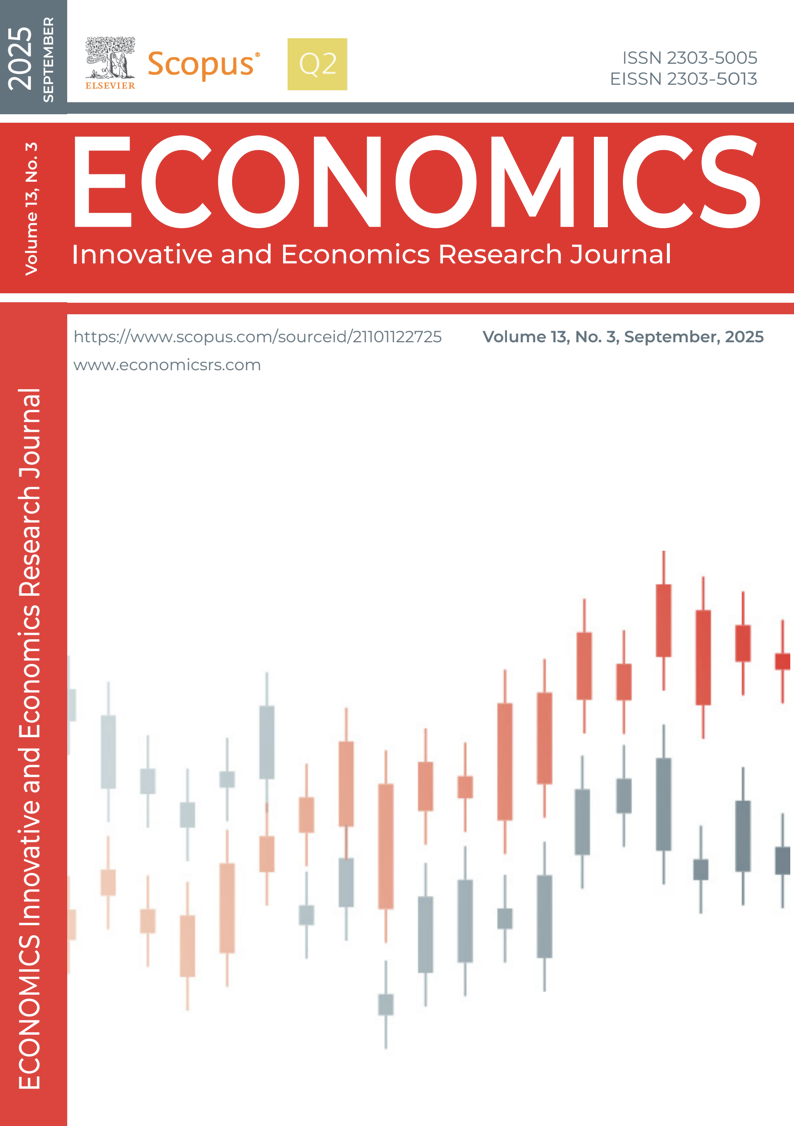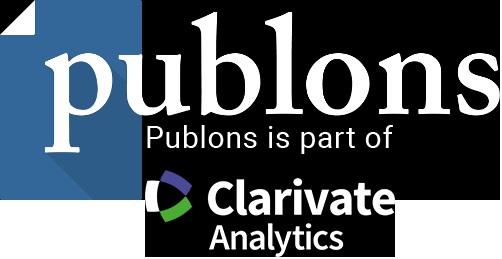ECONOMIC TRANSFORMATION IN THE DIGITAL AGE: THE NEXUS BETWEEN LEARNING AND INNOVATION
DOI:
https://doi.org/10.2478/eoik-2025-0061Keywords:
Adaptive learning technologies, Digital learning platforms, Learning design innovation, Skill acquisition, Economic impact, Socioeconomic statusAbstract
This research examines the implications of new generation digital learning technologies for the transformation of skill formation and economic outcomes under a now-ubiquitous educational environment. It adds them to the background of establishing interdependencies of adaptive learning technologies, digital learning platforms, and learning design innovation as contributory and crucial determinants outcome as economic impact with mediating role of skill acquisition and moderating role of socioeconomic status. Convenience sampling method is used to conduct a self-questionnaire based survey on social media channels and subsequently applied structural equation modelling on the responses of 377 individuals. The study established that of adaptive learning technologies, digital learning platforms and learning design innovation improved learning outcomes dramatically through experience as well as democratization. Results showcased the importance of innovative learning design in enhancing organizational performance and learning effectiveness. Indeed, digital learning platforms can be harnessed to strengthen learning in educational institutions pursuance of knowledge sharing, skill development and improving development in the economy. This research supports the understanding of the change dynamics of digital learning and inspires educational institutions and policymakers alike to adjust and survive against an increasingly digital educational landscape.
References
Adavbiele, Justina. (2014). The Impact of Skill Acquisition Programme on the Socio-Economic Status of Youths
in Nigeria. International Journal of Advanced Studies in Economics and Public Sector Management,
(1). https://internationalpolicybrief.org/wp-content/uploads/2023/12/Journal-Economics15.pdf
Adilova, N., Sultanbek, M., Sarzhanov, D., Sładkowski, A., & Zhanseitov, A. (2025). Digital Solution for
Effective Management of Remote Work: The Case of Kazakhstan Railway. Economics - innova-
tive and economics research journal, 13(1), 231–245. https://doi.org/10.2478/eoik-2025-0011
Ahmed, H. (2020). Role of digital economy in realization of inclusive growth. Academic Journal,
(12), 281. https://doi.org/10.33001/m010420201269
Aji, T. P., & Napitupulu, T. A. (2005). Effect of Gamification on E-Learning to Support Learning Achieve-
ment and Learning Motivation, 12. https://www.jatit.org/volumes/Vol96No12/4Vol96No12.pdf
Ayas, K. (1996). Design for learning and innovation. Long Range Planning, 29(6), 898–901. https://doi.
org/10.1016/s0024-6301(97)82828-2
Barikzai, S., S, V. B., & Perdana, A. (2024). Challenges and strategies in e-learning adoption in emerg-
ing economies: A scoping review. Cogent Education, 11(1), 41–58. https://doi.org/10.1080/233
x.2024.2400415
Bassanini, A., Scarpetta, S., & Visco, I. (2000). Knowledge, Technology And Economic Growth: Recent
Evidence From OECD Countries. https://doi.org/10.2139/ssrn.246375
Bentler, P. M., & Bonett, D. G. (1980). Significance tests and goodness of fit in the analysis of covariance
structures. Psychological Bulletin, 88(3), 588–606. https://doi.org/10.1037/0033-2909.88.3.588
Byrne, B. M. (2013). Structural equation modeling with Mplus: Basic concepts, applications, and pro-
gramming. https://doi.org/10.4324/9780203807644
Cohen, J. (2013). Statistical Power Analysis for the Behavioral Sciences. In In Routledge eBooks (2nd
ed.). https://doi.org/10.4324/9780203771587
Driskell, David. (2022). Impact of New Technologies on Economy and Society: A literature Review.
Journal of Cyber Security Technology and Management, 4(3), 17–25. https://mpra.ub.uni-
muenchen.de/115764/
Falk, R. F., & Miller, N. B. (1992). A primer for soft modeling. University of Akron Press. https://psyc-
net.apa.org/record/1992-98610-000
Faustmann, G., Kirchner, K., Lemke, C., & Monett, D. (2019). Which Factors Make Digital Learning
Platforms Successful? INTED Proceedings. https://doi.org/10.21125/inted.2019.1651
Fergusson, L. (2022). Learning by... Knowledge and skills acquisition through work-based learning
and research. Journal of Work-Applied Management, 14(2), 184–199. https://doi.org/10.1108/
jwam-12-2021-0065
Fornell, C., & Larcker, D. F. (1981). Evaluating Structural Equation Models with Unobservable Vari-
ables and Measurement Error. Journal of Marketing Research, 18(1), 39–50. https://doi.
org/10.1177/002224378101800104
Francis, D. V., & Weller, C. E. (2022). Economic Inequality, the Digital Divide, and Remote Learn-
ing During COVID-19. The Review of Black Political Economy, 49(1), 41–60. https://doi.
org/10.1177/00346446211017797
Furinto, A., Tamara, D., Yenni, N., & Rahman, N. J. (2023). Financial and digital literacy effects on dig-
ital investment decision mediated by perceived socio-economic status. E3S Web of Conferences,
, 02076. https://doi.org/10.1051/e3sconf/202342602076
Gameil, A. A., & Al-Abdullatif, A. M. (2023). Using Digital Learning Platforms to Enhance the In-
structional Design Competencies and Learning Engagement of Preservice Teachers. Education
Sciences, 13(4), 334. https://doi.org/10.3390/educsci13040334
Ganguli, I., Haidar, J. I., Khwaja, A. I., Stemper, S., & Zafar, B. (2024). Economic shocks and skill ac-
quisition: Evidence from a national online learning platform at the onset of COVID-19. Labour
Economics, 90, 102575. https://doi.org/10.1016/j.labeco.2024.102575
Economic Transformation in the Digital Age: The Nexus Between Learning and Innovation
Gary S. Becker. (1993). Human capital: A theoretical and empirical analysis, with special refer-
ence to education. In University of Chicago Press (3rd ed.). https://doi.org/10.7208/chica-
go/9780226041223.001.0001
Ghailani, M., Bouhdidi, J. E., & Fennan, A. (2014). Towards an Adaptive e-Learning Solution based
on Ontologies and Competencies Approach. International Journal of Computer Applications,
(21), 42–51. https://doi.org/10.5120/17311-7796
Hair, J., & Alamer, A. (2022). Partial Least Squares Structural Equation Modeling (PLS-SEM) in second
language and education research: Guidelines using an applied example. Research Methods in
Applied Linguistics, 1(3), 100027. https://doi.org/10.1016/j.rmal.2022.100027
Hair, J. F., Black, W. C., Babin, B. J., & Anderson, R. E. (2022). Multivariate data analysis. In Cengage
Learning (8th ed.). https://www.cengageasia.com/TitleDetails/isbn/9781473756540
Hair, J. F., Hult, G. T. M., Ringle, C. M., Sarstedt, M., Danks, N. P., & Ray, S. (2021). Partial Least
Squares Structural Equation Modeling (PLS-SEM) using R. In Springer Nature. https://doi.
org/10.1007/978-3-030-80519-7
Hair, J. F., Page, M., & Brunsveld, N. (2019). Essentials of business research methods. In In Routledge
eBooks. https://doi.org/10.4324/9780429203374
Hair, J. F., Ringle, C. M., & Sarstedt, M. (2011). PLS-SEM: Indeed a silver bullet. Journal of Marketing
Theory and Practice, 19(2), 139–152. https://doi.org/10.2753/MTP1069-6679190202
Hamdan Al-Abbadi, L., Alshawabkeh, R., Alkhazali, Z., Al-Aqrabawi, R., & Abu Rumman, A. (2024).
Business Intelligence and Strategic Entrepreneurship for Sustainable Development Goals (SDGs)
Through: (Green Technology Innovation and Green Knowledge Management). Economics - in-
novative and economics research journal, 13(1), 45–68. https://doi.org/10.2478/eoik-2025-0013
He, J., Lin, K. Y., & Dai, Y. (2022). A Data-Driven Innovation Model of Big Data Digital Learning
and Its Empirical Study. Information Dynamics and Applications, 1(1), 35-43. https://doi.
org/10.56578/ida010105
Henseler, J., Dijkstra, T. K., Sarstedt, M., Ringle, C. M., Diamantopoulos, A., Straub, D. W., Ketchen, D.
J., Hair, J. F., Hult, G. T. M., & Calantone, R. J. (2014). Common beliefs and reality about PLS.
Organizational Research Methods, 17(2), 182–209. https://doi.org/10.1177/1094428114526928
Henseler, J., Ringle, C. M., & Sarstedt, M. (2015). A new criterion for assessing discriminant validity
in variance-based structural equation modeling. Journal of the Academy of Marketing Science,
(1), 115–135. https://doi.org/10.1007/s11747-014-0403-8
Henseler, J., Ringle, C.M. and Sinkovics, R.R. (2009). The use of partial least squares path model-
ing in international marketing. In Emerald Group Publishing Limited, 20, 277–319. https://doi.
org/10.1108/S1474-7979(2009)0000020014
Hu, L.-T., & Bentler, P. M. (1998). Fit indices in covariance structure modeling: Sensitivity to un-
derparameterized model misspecification. Psychological Methods, 3(4), 424–453. https://doi.
org/10.1037/1082-989x.3.4.424
Jan A.G.M. van Dijk. (2005). The deepening divide: Inequality in the information society. SAGE Publi-
cations. https://doi.org/10.4135/9781452229812
Khanal, S., & Pokhrel, S. R. (2024). Analysis, Modeling and Design of Personalized Digital Learning
Environment. arXiv (Cornell University). https://doi.org/10.48550/arxiv.2405.10476
Kock, N. & ScriptWarp Systems. (2024). WarpPLS User Manual: Version 8.0. ScriptWarp Systems.
https://scriptwarp.com/warppls/UserManual_v_8_0.pdf
Kolodner, J. L. (2002). Learning by Design: Iterations of Design Challenges for Better Learning of Sci-
ence Skills. Cognitive Studies, 10(3), 356–367. https://doi.org/10.11225/jcss.9.338
Kuzmak O., & Kuzmak, O. (2023). Social Responsibility of Business Towards Sustainable Develop-
ment: Case of Ukraine. Collection of papers new economy, 1, 126-148. https://doi.org/10.61432/
CPNE0101126k
Pavithra J. C. & Sundari M. V./ Economics - Innovative and Economics Research Journal, doi: 10.2478/eoik-2025-0061
Lowry, P. B., & Gaskin, J. (2014). Partial Least Squares (PLS) Structural Equation Modeling (SEM) for
Building and Testing Behavioral Causal Theory: When to Choose It and How to Use It. IEEE Trans-
actions on Professional Communication, 57(2), 123–146. https://doi.org/10.1109/tpc.2014.2312452
Ludwig von Bertalanffy, John W. Sutherland. (1974). General Systems Theory: Foundations, Develop-
ments, Applications. IEEE Transactions on Systems, Man, and Cybernetics, SMC - 4(6), 592–
https://doi.org/10.1109/TSMC.1974.4309376
M. Ababneh, M., A. Ababneh, M., Hamouda, A., & N. AlHarbi, A. (2019, April 5). Learning by Design
Using MATLAB. Proceedings of The International Conference on Research in Education. The In-
ternational Conference on Research in Education. https://doi.org/10.33422/icreconf.2019.04.221
Mabhele, M., & Van Belle, J. (2019). A Conceptual Model for Institutional Adoption of Learning Technologies
in Higher Education. Kalpa Publications in Computing, 12, 113–123. https://doi.org/10.29007/9bks
Macklem, L. (2016). The Fourth Industrial Revolution and the knowledge economy: Can old models
both promote and protect. SSRN Electronic Journal. https://doi.org/10.2139/ssrn.2757228
Massimiliano Nuccio & Sofia Mogno. (2023). Knowledge, Skills, and Competences (KSC) in the
Knowledge-Based Economy. In In Contributions to management science, 1–22. https://doi.
org/10.1007/978-3-031-26867-0_1
Njeri, M., & Taym, A. (2024). Analysing the power of socioeconomic status on access to technology-en-
hanced learning in secondary schools. Research Studies in English Language Teaching and
Learning, 2(4), 223–250. https://doi.org/10.62583/rseltl.v2i4.55
Oroni, C. Z., & Xianping, F. (2023). Modelling the mediation role of digital learning platforms on social
media capability and students’ academic performance. Education and Information Technolo-
gies. https://doi.org/10.1007/s10639-023-12360-w
Pane, J. F., Steiner, E. D., Baird, M. D., & Hamilton, L. S. (2015). Continued progress: Promising evidence on
personalized learning. RAND Corporation. https://www.rand.org/pubs/research_reports/RR1365.html
Prince F. Ellis, Kevin D. Kuznia. (2014). Corporate eLearning impact on employees. Global Journal of
Business Research, 8(4), 1–16.Prof. (UEP), PhD, Poznań University of Economics and Busi-
ness, Department of Business Activity and Economic Policy, Poland, & Ziomek, A. (2021).
Developing digital skills in Economy 4.0. UR Journal of Humanities and Social Sciences, 20(3),
–160. https://doi.org/10.15584/johass.2021.3.9
Rohs, M., & Ganz, M. (2015). MOOCs and the claim of education for all: A disillusion by empirical
data. The International Review of Research in Open and Distributed Learning, 16(6). https://
doi.org/10.19173/irrodl.v16i6.2033
Sarstedt, M. (2019). Revisiting Hair Et al.’s Multivariate Data Analysis: 40 Years Later. In Springer
eBooks, 113–119. https://doi.org/10.1007/978-3-030-06031-2_15
Singh, H. P., & Alshammari, K. (2021). Impacts of Digital Technology-Enabled Personalized and Adap-
tive Learning on student Learning Performance: A TOE Framework for Saudi Arabia. In Inter-
national Transaction Journal of Engineering, Management, & Applied Sciences & Technolo-
gies. International Transaction Journal of Engineering, Management, & Applied Sciences &
Technologies, 12–13(13), 1–12. https://doi.org/10.14456/ITJEMAST.2021.262
Susilana, R., Dewi, L., Setiawan, B., Alias, N., DeWitt, D., Hazar, S., & Zulnaidi, H. (2024). Need
Analysis of Critical Thinking Skills Acquisition through Adaptive Learning Model: Indone-
sian Perspective on Freedom of Learning Curriculum. AL-ISHLAH Jurnal Pendidikan, 16(3),
–3500. https://doi.org/10.35445/alishlah.v16i3.4720
Szántó, N., Monek, G. D., & Fischer, S. (2024). Development of an Immersive, Digital Twin-Support-
ed Smart Reconfigurable Educational Platform for Manufacturing Training: A Proof of Con-
cept. Journal of Engineering Management and Systems Engineering, 3(4), 199-209. https://doi.
org/10.56578/jemse030402
Vlasenko, T. (2023). Dimensions of The Analysis of the Organizational Culture of Multinational Compa-
nies. Collection of papers new economy, 1, 110-125. https://doi.org/10.61432/CPNE0101110v
Economic Transformation in the Digital Age: The Nexus Between Learning and Innovation
Wang, X., Wang, Y., & Ye, Y. (2023). Subjective socioeconomic status predicts e-learning engagement in
college students: The mediating role of perceived social support and self-efficacy. European Jour-
nal of Psychology of Education, 39(2), 1119–1134. https://doi.org/10.1007/s10212-023-00725-1
Weber, M. (1978). Economy and society: An outline of interpretive sociology. Internet Archive. https://
archive.org/details/MaxWeberEconomyAndSociety/page/n5/mode/2up
Westland, J. C. (2010). Lower bounds on sample size in structural equation modelin. Electronic Com-
merce Research and Applications, 9(6), 476–487. https://doi.org/10.1016/j.elerap.2010.07.003
White, G. (2020). Adaptive Learning Technology Relationship with Student Learning Outcomes. Jour-
nal of Information Technology Education Research, 19, 113–130. https://doi.org/10.28945/4526
World Economic Forum. (2021). Upskilling for shared prosperity: The future of jobs and skills. World
Economic Forum. https://www.weforum.org/reports
Zhang, J. (2009). Technology-supported learning innovation in cultural contexts. Educational Technol-
ogy Research and Development, 58(2), 229–243. https://doi.org/10.1007/s11423-009-9137-6
Zhang, Z. G., Ren, Q. B., Zhao, W. C., Li, M. C., Liu, L. P., & Lyu, Y. G. (2024). An Intelligent Recording
Method for Field Geological Survey Data in Hydraulic Engineering Based on Speech Recognition.
Journal of Civil and Hydraulic Engineering, 2(4), 220-237. https://doi.org/10.56578/jche020403
Downloads
Published
How to Cite
Issue
Section
License
Copyright (c) 2025 ECONOMICS - INNOVATIVE AND ECONOMICS RESEARCH JOURNAL

This work is licensed under a Creative Commons Attribution-NonCommercial-NoDerivatives 4.0 International License.























